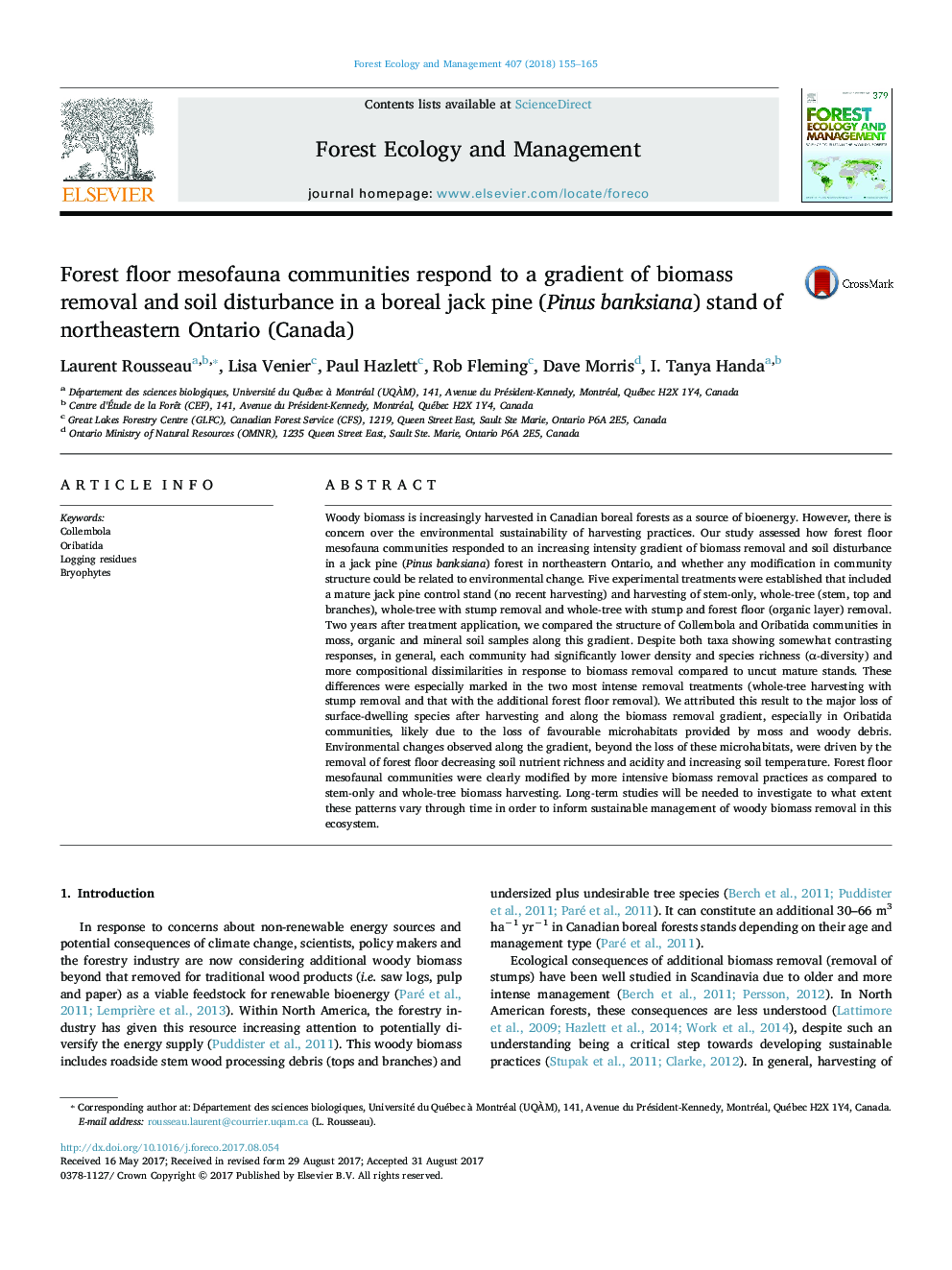| کد مقاله | کد نشریه | سال انتشار | مقاله انگلیسی | نسخه تمام متن |
|---|---|---|---|---|
| 6541985 | 1421351 | 2018 | 11 صفحه PDF | دانلود رایگان |
عنوان انگلیسی مقاله ISI
Forest floor mesofauna communities respond to a gradient of biomass removal and soil disturbance in a boreal jack pine (Pinus banksiana) stand of northeastern Ontario (Canada)
دانلود مقاله + سفارش ترجمه
دانلود مقاله ISI انگلیسی
رایگان برای ایرانیان
کلمات کلیدی
موضوعات مرتبط
علوم زیستی و بیوفناوری
علوم کشاورزی و بیولوژیک
بوم شناسی، تکامل، رفتار و سامانه شناسی
پیش نمایش صفحه اول مقاله

چکیده انگلیسی
Woody biomass is increasingly harvested in Canadian boreal forests as a source of bioenergy. However, there is concern over the environmental sustainability of harvesting practices. Our study assessed how forest floor mesofauna communities responded to an increasing intensity gradient of biomass removal and soil disturbance in a jack pine (Pinus banksiana) forest in northeastern Ontario, and whether any modification in community structure could be related to environmental change. Five experimental treatments were established that included a mature jack pine control stand (no recent harvesting) and harvesting of stem-only, whole-tree (stem, top and branches), whole-tree with stump removal and whole-tree with stump and forest floor (organic layer) removal. Two years after treatment application, we compared the structure of Collembola and Oribatida communities in moss, organic and mineral soil samples along this gradient. Despite both taxa showing somewhat contrasting responses, in general, each community had significantly lower density and species richness (α-diversity) and more compositional dissimilarities in response to biomass removal compared to uncut mature stands. These differences were especially marked in the two most intense removal treatments (whole-tree harvesting with stump removal and that with the additional forest floor removal). We attributed this result to the major loss of surface-dwelling species after harvesting and along the biomass removal gradient, especially in Oribatida communities, likely due to the loss of favourable microhabitats provided by moss and woody debris. Environmental changes observed along the gradient, beyond the loss of these microhabitats, were driven by the removal of forest floor decreasing soil nutrient richness and acidity and increasing soil temperature. Forest floor mesofaunal communities were clearly modified by more intensive biomass removal practices as compared to stem-only and whole-tree biomass harvesting. Long-term studies will be needed to investigate to what extent these patterns vary through time in order to inform sustainable management of woody biomass removal in this ecosystem.
ناشر
Database: Elsevier - ScienceDirect (ساینس دایرکت)
Journal: Forest Ecology and Management - Volume 407, 1 January 2018, Pages 155-165
Journal: Forest Ecology and Management - Volume 407, 1 January 2018, Pages 155-165
نویسندگان
Laurent Rousseau, Lisa Venier, Paul Hazlett, Rob Fleming, Dave Morris, I. Tanya Handa,